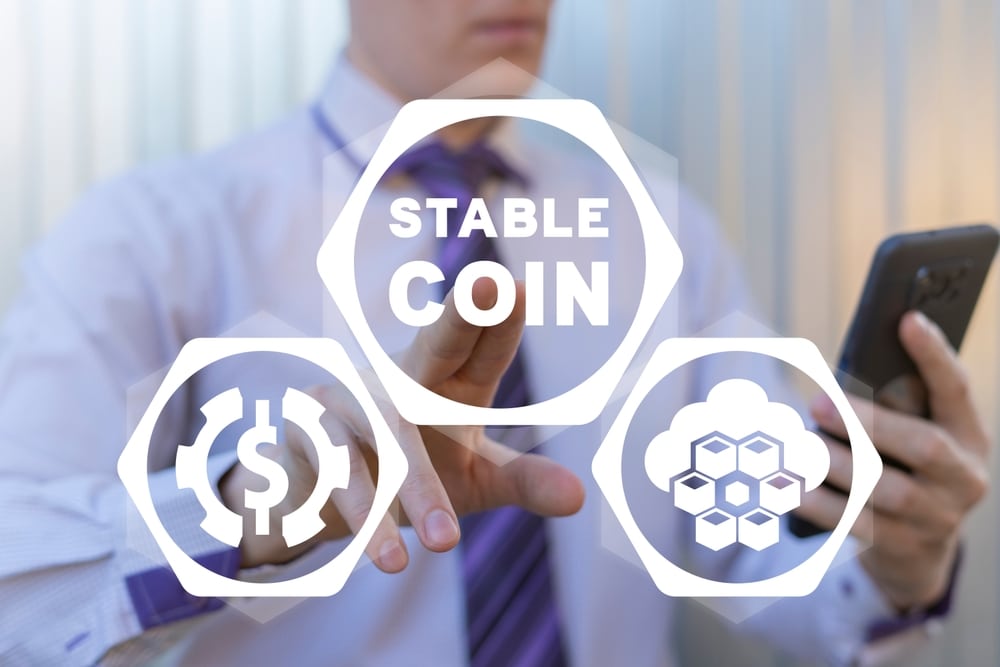The crypto market is known to be highly volatility. To shield users from wild price swings, various crypto players have introduced stablecoins. But what are they? This guide explains in detail all you need to know about stablecoins. By the end, you should understand the different types of stablecoins and their role in the crypto industry.
What are Stablecoins?
Stablecoins are digital currencies designed to trade at a certain price. They are used by people who want to explore the crypto ecosystem without being exposed to high volatility.
📈🤖 Unlock unparalleled trading potential with GPT Stocks Master AI! Revolutionize your portfolio, leveraging real-time insights and predictive analytics. Don’t miss out – step into a world where precision and profitability meet. Ready to transform your trading journey? Click “Master My Trades” now for your exclusive access! ✨🚀📊
To maintain the expected price, most stablecoins are pegged to assets that are considered stable, such as fiat currencies and gold.
How Stablecoins Work
As stated before, stablecoins’ prices remain stable because they are backed by real-world assets, which can also be referred to as reserves. This makes it possible for stablecoin holders to easily convert their tokens to fiat.
Stablecoins have become popular among companies that accept crypto payments as they are assured that the coins’ price won’t change while processing transactions. Stablecoins are also the go-to cryptocurrencies for novice crypto users, thus promoting crypto adoption.
Types of Stablecoins
Here are the various types of stablecoins available in the market.
Fiat-Backed
Fiat currencies back these stablecoins. Each circulating token has one currency unit backing it, allowing holders to convert their coins to fiat at any time. Fiat-backed stablecoins are issued by centralized companies that are required by law to contract external auditors to carry out regular audits to ensure there are enough reserves backing their stablecoins.
Commodity-Backed
These stablecoins maintain their value by being pegged to tangible assets like silver, gold, or precious metal. For example, popular stablecoin Paxos Gold is backed by gold reserves, which its issuer, Paxos, holds.
Crypto-Backed
The highly volatile crypto assets can be used to back stablecoins. For this to be effective, stablecoins must be over-collateralized, meaning the reserves’ value must be higher than the value of the circulating stablecoins. DAI is a good example of a crypto-backed stablecoin. Although it is pegged to US dollars, it’s ETH that backs the stablecoin.
Algorithmic
These stablecoins maintain stability using a computer program that controls their supply and demand. However, there hasn’t been a successful algorithmic stablecoin. One of such stablecoins is TerraUSD, which collapsed in May 2022.
List of Popular Stablecoins
Tether (USDT)
USDT was first issued in 2014. With a market cap of $82.9 billion, It is the biggest stablecoin. Several crypto exchanges have listed USDT, thus making it easy for crypto users to move funds between trading platforms. While USDT’s issuer, Tether Limited, claims to back its stablecoin with fiat currencies, the company has previously been charged with lying about its reserves.
USD Coin (USDC)
USDC is the second-biggest stablecoin, with a market cap of $26.78 billion. It was launched in 2018 by crypto exchange Coinbase and blockchain company Circle. USDC is pegged to USD. The stablecoin rose to fame after Tether Limited was accused of lying about USDT’s backing.
Binance USD (BUSD)
BUSD was launched by Binance and Paxos. However, the two companies no longer work together after the United States Securities and Exchange Commission directed Paxos to quit issuing new BUSD tokens back in February. Despite the regulatory pressure, Binance USD is still the third-biggest stablecoin, with a market cap of $3.1 billion.
Bitcoin vs. Stablecoins
The major difference between stablecoins and Bitcoin is that the latter is not backed by any asset, meaning its price can fluctuate. Since Bitcoin experiences wild price swings, it is ideal for trading, allowing traders to take profits when they predict price movements correctly.
On the other hand, stablecoins are suitable for crypto users who don’t want exposure to market volatility. They also allow cheap and easy movement of funds from one exchange to another.
Conclusion
Stablecoins offer the much-needed stability in the crypto market. Crypto users no longer have to worry about losing their funds due to high price volatility. However, stablecoins could be more reliable if companies issuing them operate in transparency.

